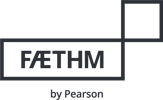The business case for workforce planning is obvious and irrefutable. But the question for many...
Determining which roles to buy, borrow, build, bot, bounce or bind
Workforce planners want visibility across an organizational unit or job family about which roles to buy, borrow, build, bot, bounce or bind. For example, a talent acquisition leader will be interested in how many of their roles can be filled with external hires and how many with internal promotions. A learning and development manager might look at their bench strength to identify gaps in the skills, capabilities needed for future roles in the organization and take action to up-skill the workforce.
What's the best way to do that?
The answer is in a combination of three things:
-
using Faethm to create enterprise-wide workforce plans;
-
using Faethm to create workforce plans for entire organizational units or job families; and
-
using Faethm to create workforce plans for individual roles.
Then create a list of estimated enterprise roles
Then use any combination of humans and bots to create a list of estimated enterprise roles.
The first step is to identify the role names that make up your organizational unit or job family. This can be done using Faethm’s skillset database or by manually creating a list of roles yourself if you already have one available.
Once you have created this list it’s time to create an enterprise role hierarchy so that planners can understand how different jobs are related to each other within their organization structure.
Using Faethm’s Job Family Hierarchy tool, which uses key characteristics (job level title; industry sector; geography; etc.) to group similar jobs together into broader categories called ‘job families’ - we were able to organize our sample organizations into broad categories that covered all areas of business: Admin Support (Hospitality), Assistant Managers (Retail), Business Development Executives (Telecoms), Customer Service Reps (IT), Customer Service Team Leaders/Supervisors (Retail).
Then map each role to one or more suitable bot, human or hybrid skillset or job
Once you've identified the roles in your organization, map each role, skillset, and job accordingly.
-
A role is a set of activities performed by an individual that add value for an organization.
-
A skillset is a collection of competencies, knowledge and experience required to successfully do a job.
-
A job is a combination of tasks required to achieve business outcomes in an organizational unit – typically contributing towards one strategic goal or objective.
Use Faethm's analytics and reporting to see where there are gaps to be filled, through recruitment and/or up-skilling
You can identify the roles that are most in demand – or least in demand – and make sure you’re ready for any jobs that pop up unexpectedly.
You can also compare data across divisions, regions and geographies
With Faethm’s analytics and reporting tools, you can also compare data across divisions, regions and geographies. This enables you to see where there are gaps to be filled through recruitment or up-skilling programs.
Faethm is your trusted workforce planning partner - the only comprehensive platform that creates enterprise-wide workforce plans with AI
Faethm's AI technology learns from the data you have and uses it to create the best solution for your company. We have helped companies across industries like healthcare, manufacturing, and retail build more efficient operations by providing them with a better understanding of their workforce needs and how to address them.
With the rise of AI and automation in the workplace, workforce planners will need to think beyond what they have today. Workforce planning is entering a new era where skills are evolving faster than ever before.



